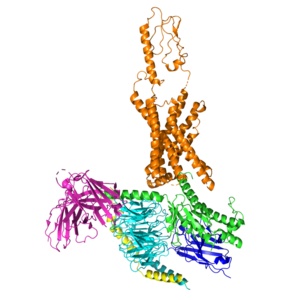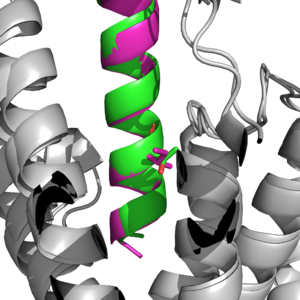User:SaraKathryn Kalkhoff/Sandbox 1
From Proteopedia
(Difference between revisions)
| Line 3: | Line 3: | ||
== Introduction == | == Introduction == | ||
| - | [https://www.sciencedirect.com/topics/medicine-and-dentistry/gastric-inhibitory-polypeptide The Glucose-dependent Insulinotropic Polypeptide (GIP) is a ligand that can be bound to its receptor (GIP-R) to help facilitate the breakdown of glucose.] This is the basis of what makes up one of the key ways that glucose is bound and broken down into different parts, including insulin, to be able to maintain blood glucose levels within the body. With this structure, it is also to work with the GLP-1 receptors found within cells to help break down glucose | + | [https://www.sciencedirect.com/topics/medicine-and-dentistry/gastric-inhibitory-polypeptide The Glucose-dependent Insulinotropic Polypeptide (GIP) is a ligand that can be bound to its receptor (GIP-R) to help facilitate the breakdown of glucose.] This is the basis of what makes up one of the key ways that glucose is bound and broken down into different parts, including insulin, to be able to maintain blood glucose levels within the body. With this structure, it is also to work with the GLP-1 receptors found within cells to help break down glucose present within cells to create energy. |
[[Image:Gip.png|300px|right|thumb|Figure 1: Main Structure of the Glucose-dependent Insulinotropic Polypeptide Receptor (GIP-R).]] | [[Image:Gip.png|300px|right|thumb|Figure 1: Main Structure of the Glucose-dependent Insulinotropic Polypeptide Receptor (GIP-R).]] | ||
Revision as of 20:15, 12 April 2024
| |||||||||||


